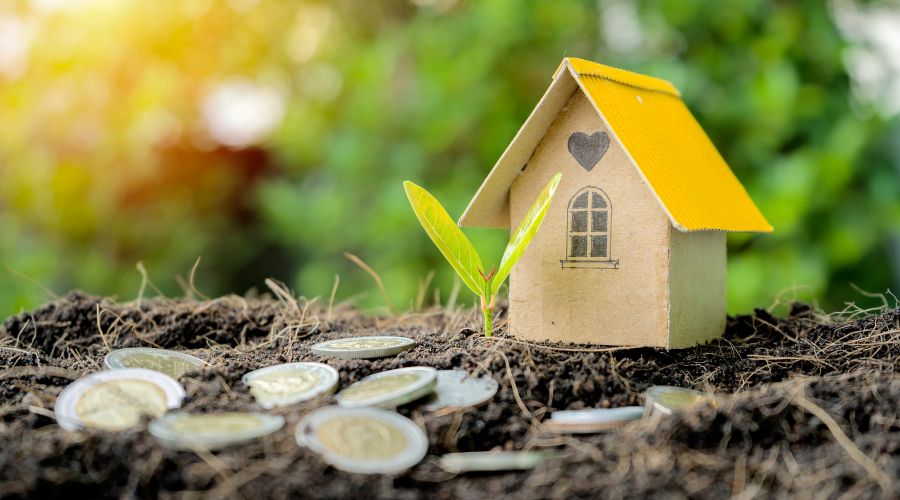When it comes to building wealth it’s very important for you to diversify your investment portfolio.
Having a well-rounded portfolio not only helps you spread your risk but also ensures that you’re able to take full advantage of multiple investment opportunities.
Investing in physical assets offer a range of benefits that make them an attractive addition to any investment portfolio.
Some of the benefits of buying physical assets are:
- Tangibility: Physical assets are tangible and can be seen, feel, touched, and held and therefore provides a sense of security and ownership.
- Inflation Hedge: Physical assets often serve as a hedge against inflation thereby preserving your purchasing power during times of rising prices.
- Stability: Many physical assets have a history of stable returns and can provide a buffer against volatility in financial markets.
- Passive income potential: Some physical assets can generate passive income, allowing you to earn money without actively managing the investment.
Real Estate
1. Rental properties
Residential properties: Investing in residential rental properties, such as single-family homes or multi-unit apartment buildings, can generate a steady stream of rental income.
As a landlord, you’ll also benefit from property appreciation over time.
Commercial properties: Commercial real estate, including office buildings, retail spaces, and warehouses, can provide higher rental income and longer lease terms compared to residential properties.
However, they often require larger initial investments and specialized knowledge of the market.
2. Real estate investment trusts (REITs)
REITs are companies that own and manage income-producing real estate. By investing in a REIT, you can gain exposure to real estate without directly owning and managing properties.
3. Flipping houses
This strategy involves buying a property, making improvements, and then selling it for a profit.
Flipping houses can yield significant returns but requires experience, skill, and access to financing.
4. Vacation rentals
Investing in vacation rental properties, such as beach houses or mountain cabins, allows you to generate rental income from short-term vacationers.
Platforms like Airbnb and VRBO make it easier to manage and market your property.
5. Farmland
Agricultural land can be a stable, long-term investment that provides income through crop production, livestock, or leasing to farmers. It also benefits from appreciation as demand for land increases.
Precious Metals
6. Gold
Bullion bars and coins: Physical gold can be purchased in the form of bars and coins, providing a tangible store of value that has been recognized for centuries.
Gold ETFs and mutual funds: These financial products allow you to invest in gold without physically owning the metal. They track the price of gold and provide a more liquid investment option.
7. Silver
Like gold, silver can be purchased as bars and coins, or through ETFs and mutual funds. Silver has industrial applications and serves as a store of value during economic uncertainty.
8. Platinum
Platinum is a rare and valuable metal with applications in the automotive, jewelry, and chemical industries.
It can be purchased as bars, coins, or through investment vehicles like ETFs.
9. Palladium
This precious metal is used primarily in the automotive industry for catalytic converters. Palladium investments can be made through bars, coins, or ETFs.
Art and Collectibles
10. Fine art
Investing in artwork from renowned artists can provide long-term appreciation and serve as a status symbol. However, it requires expertise and can be illiquid.
11. Classic cars
Vintage automobiles in excellent condition can appreciate in value over time, especially if they are rare or have historical significance.
This market requires knowledge and passion for automobiles.
12. Rare stamps and coins
Collecting stamps and coins can be a rewarding hobby and investment. Rarity, condition, and historical significance can contribute to the value of these collectibles.
However, this market requires specialized knowledge and may be illiquid.
13. Vintage wine
High-quality, aged wines can appreciate in value and serve as a status symbol. Investing in vintage wine requires knowledge of wine regions, producers, and proper storage conditions.
14. Luxury watches
Timepieces from prestigious brands like Rolex, Patek Philippe, and Audemars Piguet can retain or even appreciate in value over time. Investing in luxury watches necessitates an understanding of the market and watchmakers.
Infrastructure and Green Energy Investments
15. Solar farms
Investing in solar energy production facilities can provide long-term, stable income and contribute to the growing demand for clean energy.
This investment requires a significant upfront capital commitment and an understanding of the renewable energy sector.
16. Wind farms
Similar to solar farms, wind farms generate clean energy and can offer long-term returns. Investors must consider factors such as location, local regulations, and market conditions.
17. Hydroelectric power plants
These facilities harness the power of moving water to generate electricity.
Investing in hydroelectric plants can provide stable income but requires substantial capital and knowledge of the energy market.
18. Energy storage facilities
As renewable energy becomes more prevalent, the demand for energy storage solutions increases.
Investing in energy storage facilities can be a profitable long-term strategy but requires knowledge of emerging technologies.
19. Electric vehicle charging stations
The growth of electric vehicles drives the need for charging infrastructure.
Investing in charging stations can offer potential returns as the market expands but requires understanding of the electric vehicle industry and local regulations.
20. Timberland
Timberland provides a stable, long-term investment with the potential for income through timber sales, carbon credits, and recreational leasing.
It also serves as a hedge against inflation and a natural resource for the future.
You can invest in timberland through direct ownership, partnerships, or timber investment management organizations (TIMOs). Thorough research and due diligence are essential when selecting timberland investments.
21. Tax Liens
Tax liens are claims placed on properties due to unpaid taxes. Governments auction off these liens to investors, who then have the right to collect the debt, plus interest, from the property owner.
Tax lien investments can provide high returns, but they come with risks, such as property owners defaulting on payments or the potential for property damage.
To invest in tax liens, you’ll need to attend auctions, research properties, and understand local laws and regulations. Engaging with experts can be beneficial in navigating this market.
Tips for Investing in Physical Assets
- Diversify your portfolio: Spread your investments across various physical assets to reduce risk and maximize potential returns.
- Thoroughly research and understand each asset: Conduct in-depth research on each asset class, its risks, and potential returns before investing.
- Engage with experts: Consult with professionals in each asset class to gain valuable insights and guidance.
- Consider liquidity and exit strategy: Evaluate the liquidity of each investment and have a plan for selling or liquidating assets when needed.
- Regularly assess and adjust your investments: Continuously monitor your investments and make adjustments based on market conditions and your financial goals.
Conclusion
So these are the 21 physical assets that are surely going to help you rebalance your investment portfolio and also can generate higher returns in long term.








